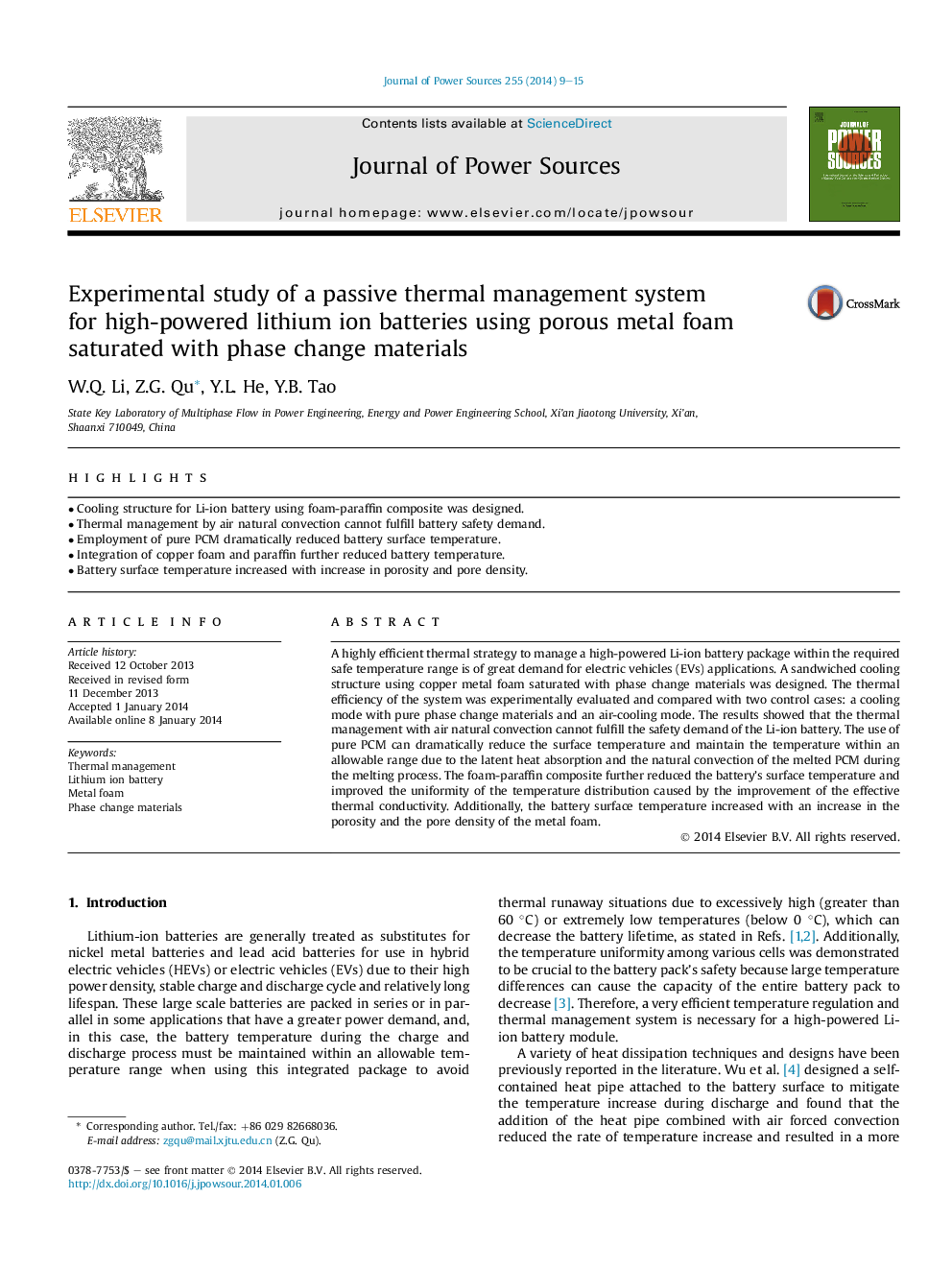| Article ID | Journal | Published Year | Pages | File Type |
|---|---|---|---|---|
| 1284201 | Journal of Power Sources | 2014 | 7 Pages |
•Cooling structure for Li-ion battery using foam-paraffin composite was designed.•Thermal management by air natural convection cannot fulfill battery safety demand.•Employment of pure PCM dramatically reduced battery surface temperature.•Integration of copper foam and paraffin further reduced battery temperature.•Battery surface temperature increased with increase in porosity and pore density.
A highly efficient thermal strategy to manage a high-powered Li-ion battery package within the required safe temperature range is of great demand for electric vehicles (EVs) applications. A sandwiched cooling structure using copper metal foam saturated with phase change materials was designed. The thermal efficiency of the system was experimentally evaluated and compared with two control cases: a cooling mode with pure phase change materials and an air-cooling mode. The results showed that the thermal management with air natural convection cannot fulfill the safety demand of the Li-ion battery. The use of pure PCM can dramatically reduce the surface temperature and maintain the temperature within an allowable range due to the latent heat absorption and the natural convection of the melted PCM during the melting process. The foam-paraffin composite further reduced the battery's surface temperature and improved the uniformity of the temperature distribution caused by the improvement of the effective thermal conductivity. Additionally, the battery surface temperature increased with an increase in the porosity and the pore density of the metal foam.
